


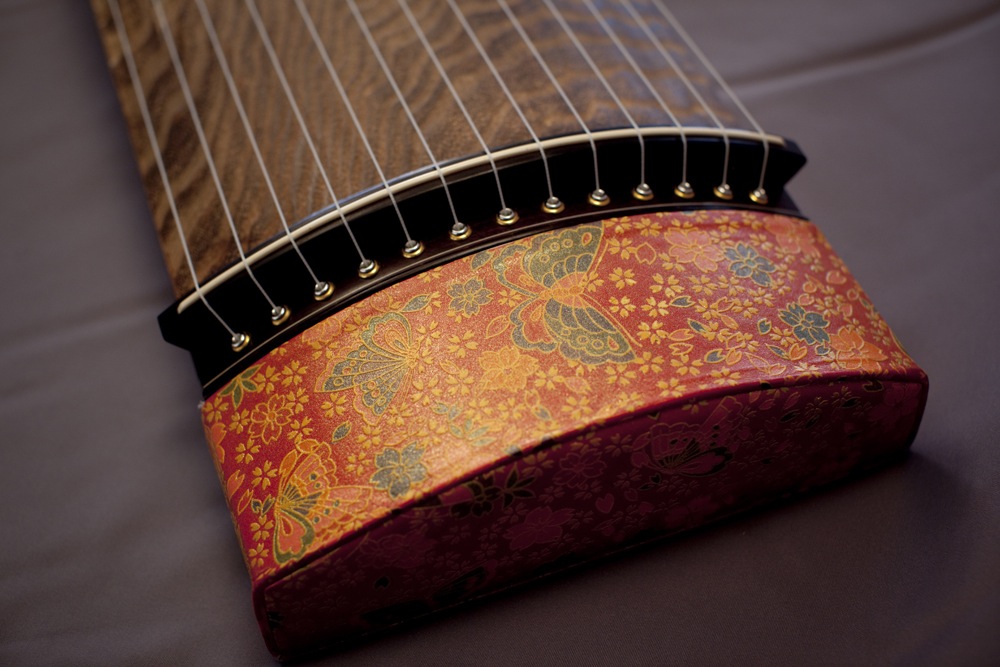
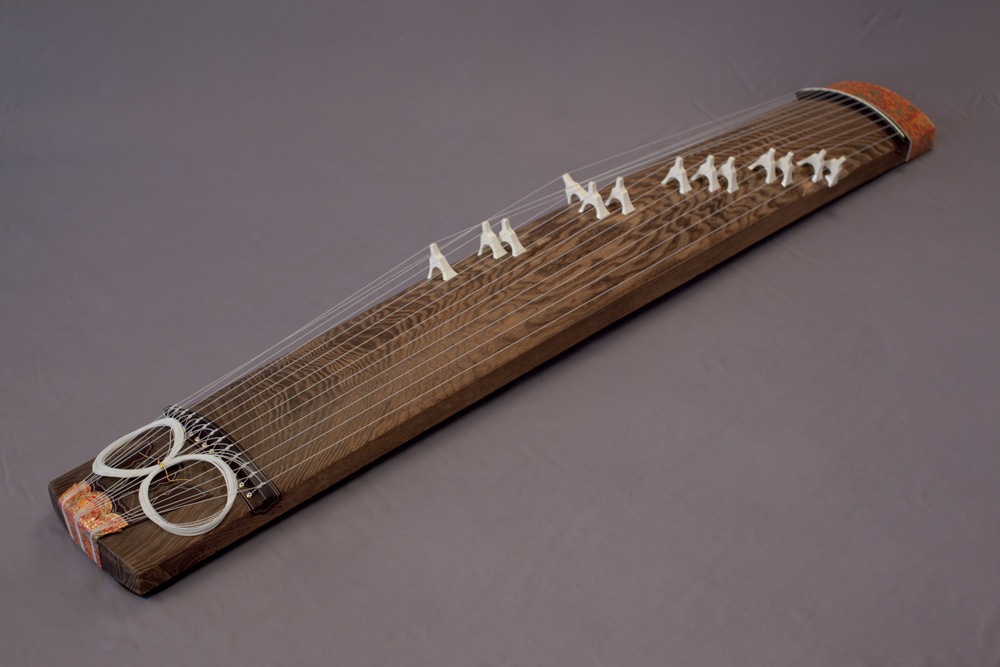
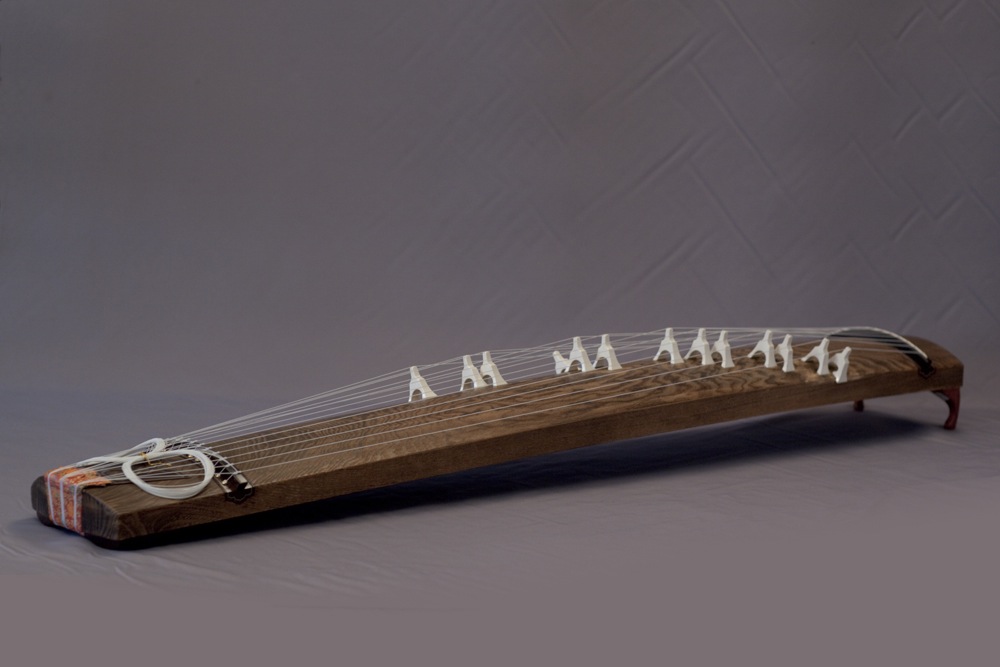
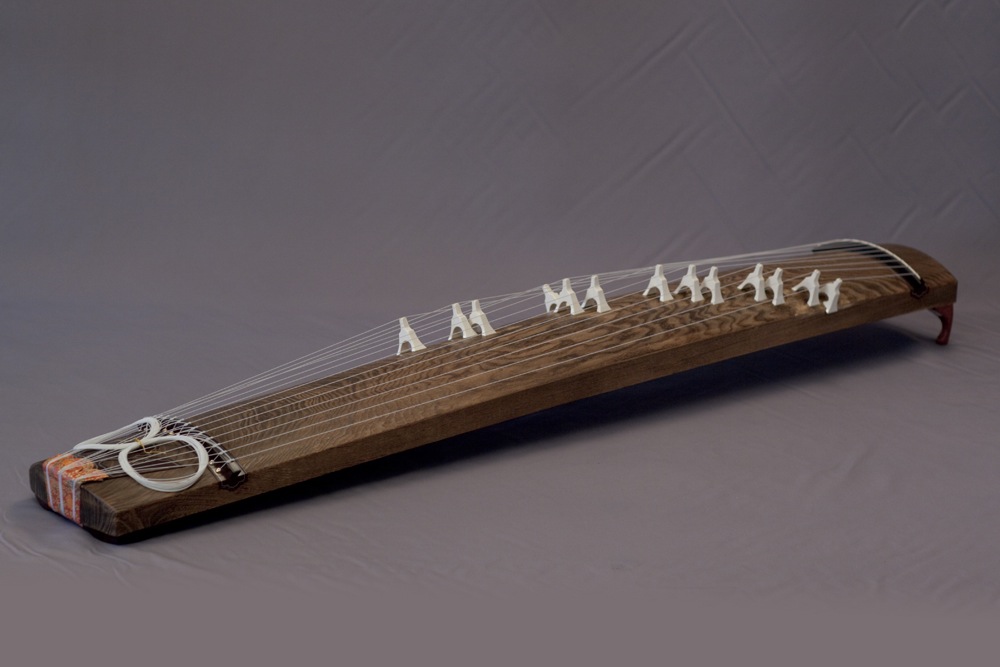
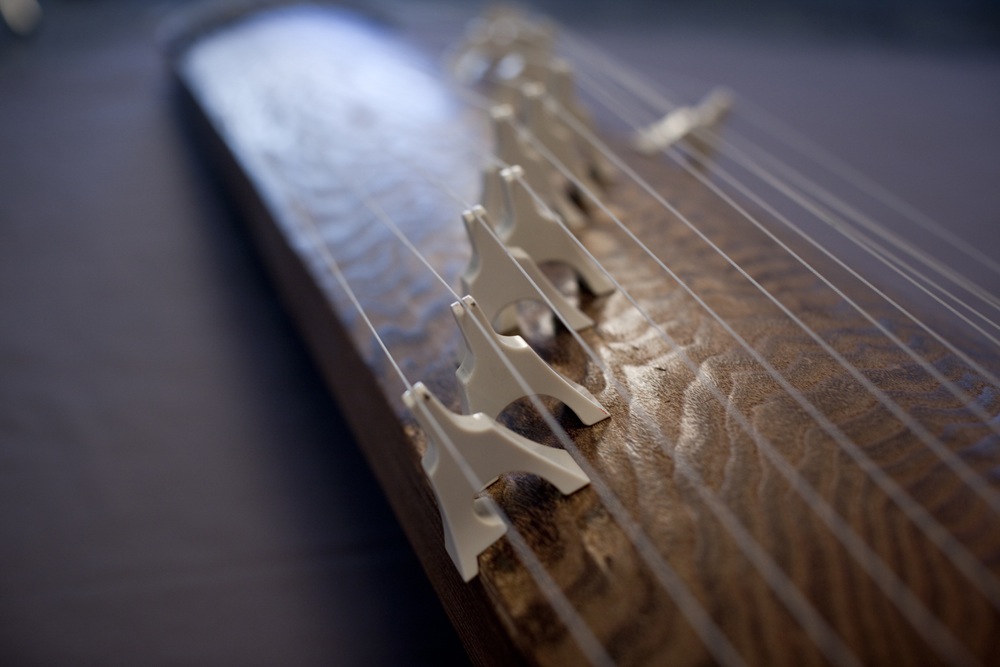
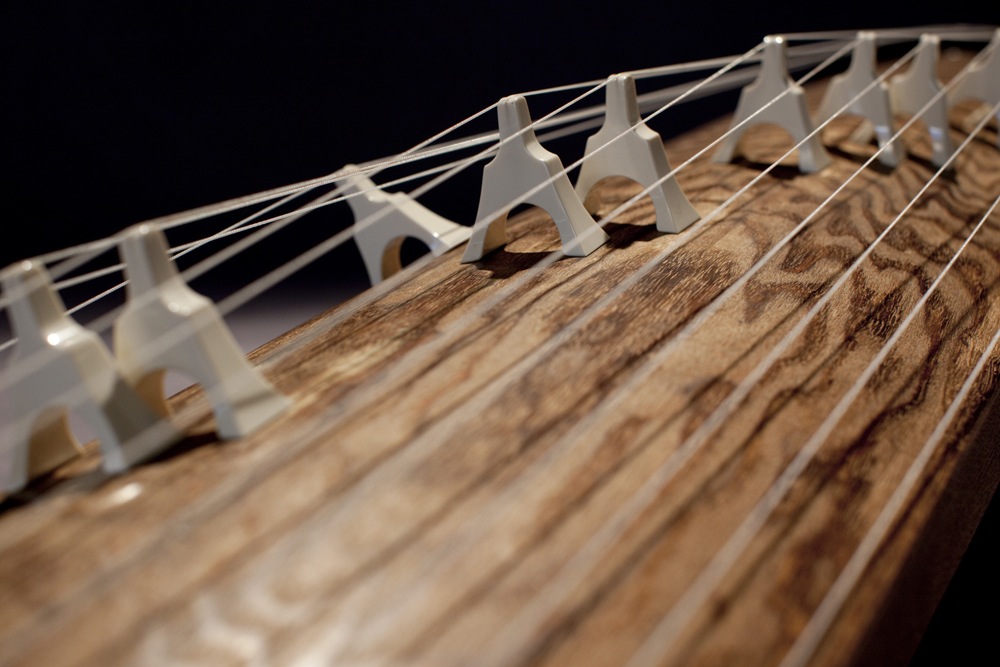

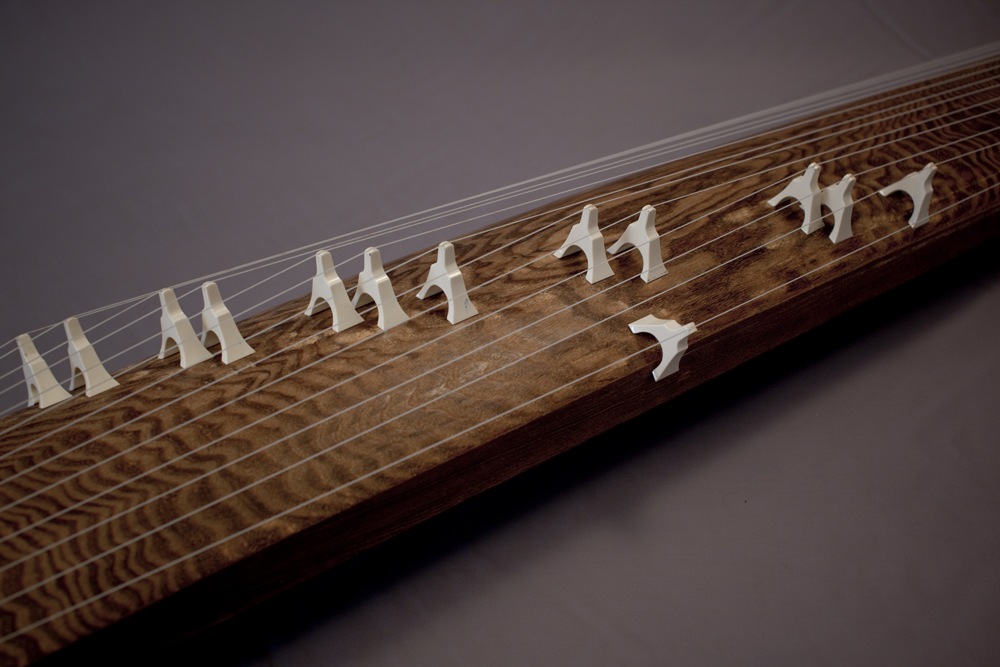
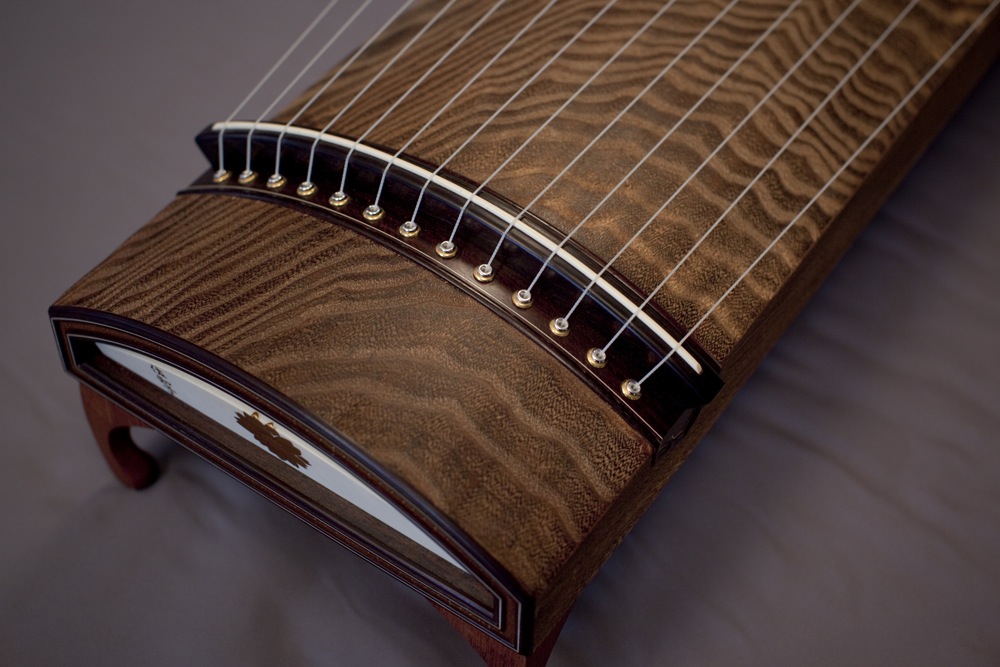
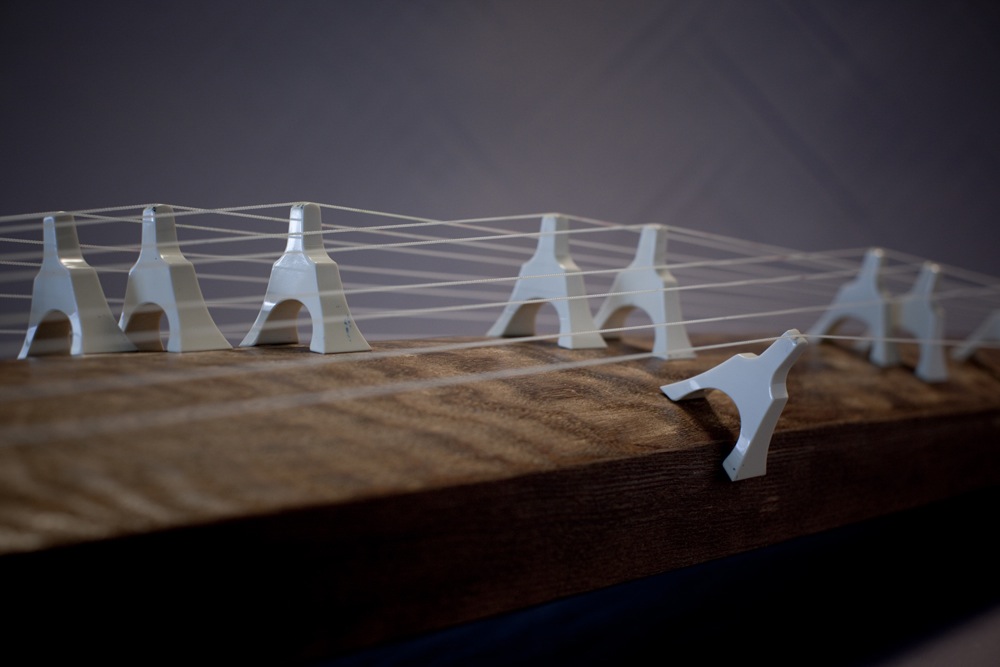

















The koto is the most well-known of all the traditional Japanese instruments.
In addition to the standard character 箏, the alternate character 琴, also pronounced koto, is sometimes used.
The koto was introduced from China and the standard version has 13 strings. There is also a 7-string version, also written with the character 琴 but pronounced kin, and a 6-stringed version written 和琴 and pronounced yamatogoto or wagon.
Generally, the 13 strings are all of the same thickness, and the instrument is tuned for each piece using movable bridges called kotoji. It is played with plectra on three fingers of the right hand.
At first, the koto was used in the kangen (wind and string) ensembles of the gagaku genre, but later it went on to be used as accompaniment to temple songs, and eventually became popular to play as a solo instrument during the Edo period.
Yatsuhashi Kengyo is famous as the founder of early modern koto music, and there are now styles of playing such as the Ikuta school and the Yamada school. Ensembles with the shamisen and shakuhachi (and kokyū, in the past) are also popular.
New pieces have been composed continuously since the Meiji era, and starting in the Taishō era, modern versions of the instrument with and 20, 25, and 30 strings, as well as the 17-string bass koto, have been developed.




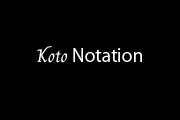
Performance and Explanation by Yoshihara Sachiko
※ When musical notation is used in each episode, it is written in absolute pitch.
Yoshizawa Kengyō (1801/08 - 1872), composed around 1855
Uses kokin tuning. It was composed at the end of the Edo period, but spread nationwide during the Meiji period and is beloved to this day. It consists of an instrumental introduction (mae-dan), first song section(mae-uta) , instrumental interlude (tegoto), and second song section (ato-uta). It is generally performed in an ensemble with the shakuhachi, but the original version featured the kokyū.
Miyagi Michio (1894-1956), composed in 1909
This was the composer's debut work when he was 14 years old. Although the piece uses classical playing techniques, the composer's way of evoking scenery is innovative.
Sawai Tadao(1937-1997), composed in 1978
The piece is a song of praise to nature, humanity, and the arts. The composer was active in koto performance and composition. He left a legacy of many works that made full use of modern techniques, and also worked to train the next generation of composers.
Ikebe Shin-ichirō (1943- ), composed in 1977
The piece consists of parts I and II, which complement each other as a pair. In each part, the classical kumoi tuning has an opposing relationship with the short trailing tones produced by releasing a pressed string (the oshi-hanashi technique). In one, these tones begin to deviate from the kumoi tuning, and in the other, they return to it. The title "Freezing" has nothing to do with what the piece expresses. It represents only that the composer created a state of "frozen sensitivity" inside himself, and that the piece was written in that state. (from the score commentary)